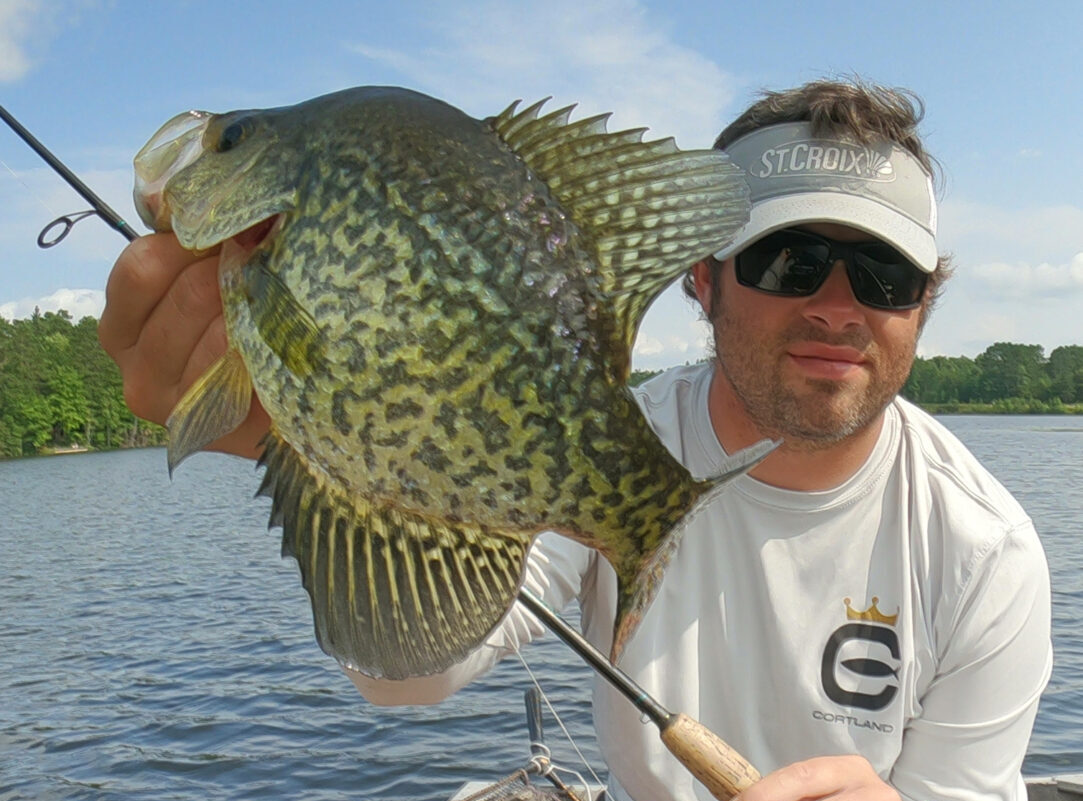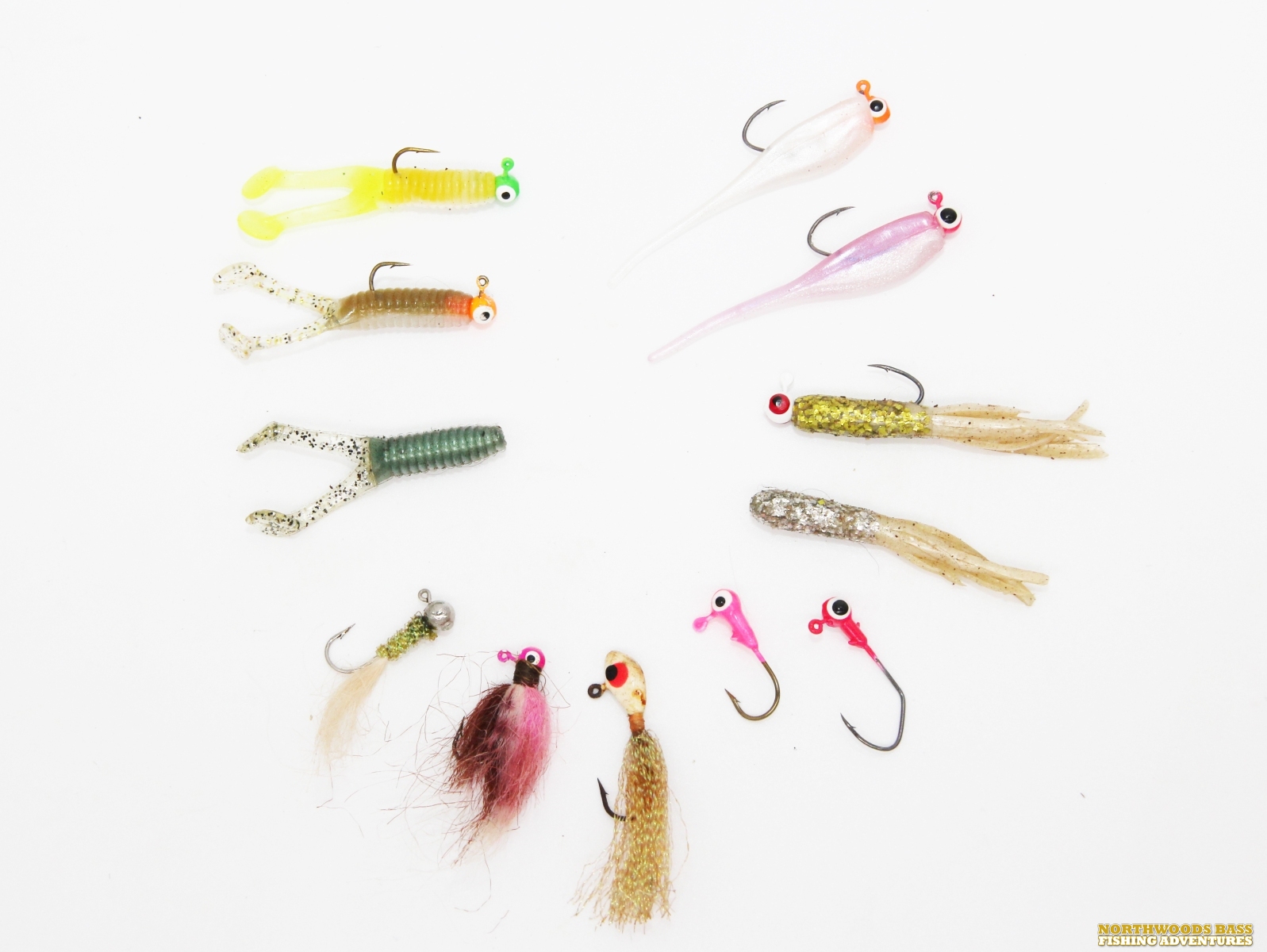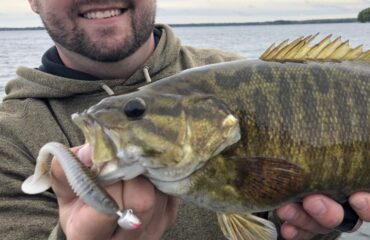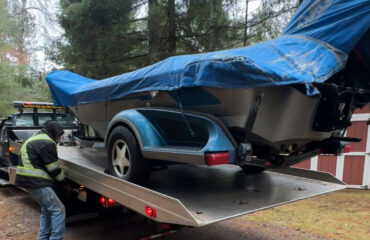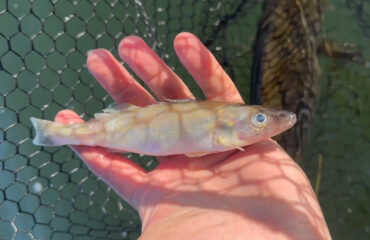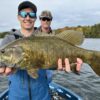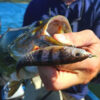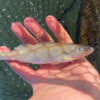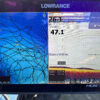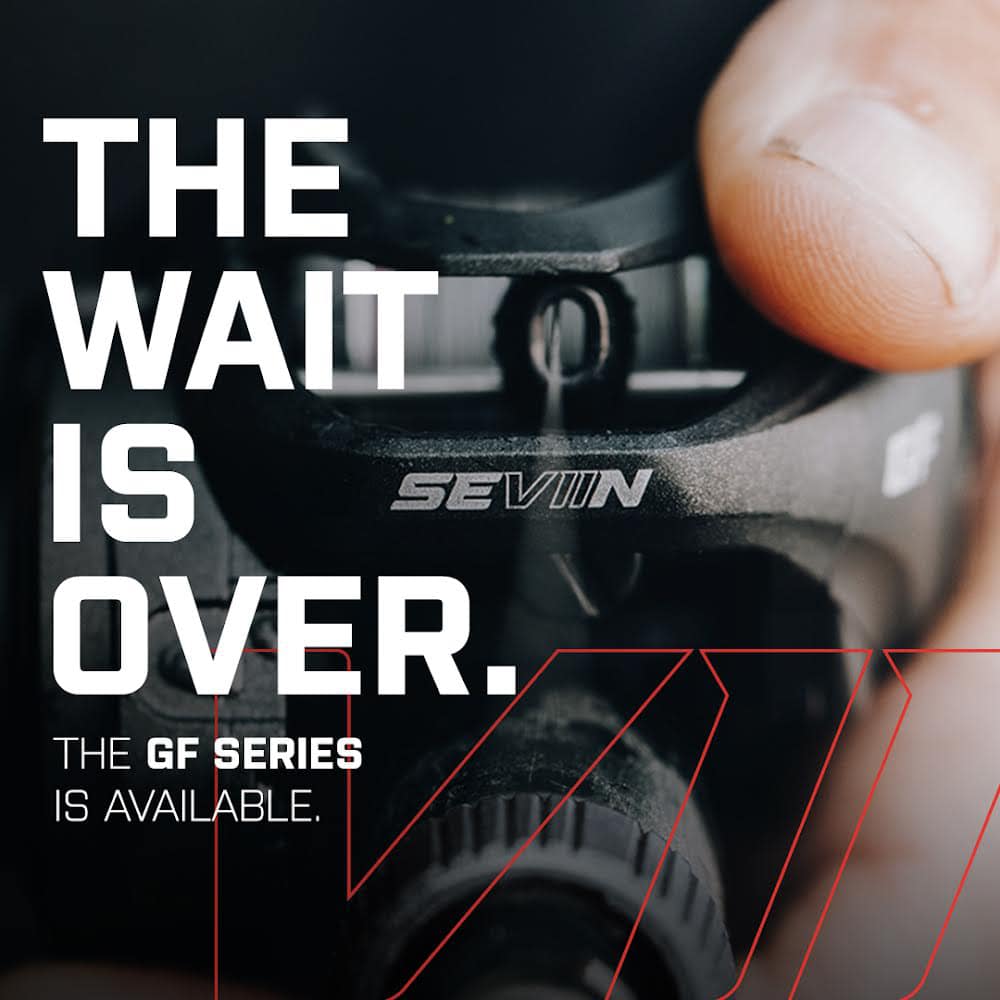Simply Crappies
All throughout the Midwest, crappie anglers are superstars when fish are shallow, vulnerable, and abundant in spring. For a few weeks, everyone is catching them it seems, and it’ll be the only time of year they get targeted by the majority. But come summer, the game changes. The waters warm and shallows get vacated, with fish relocating to offshore areas where they school heavily and might roam and suspend at for the remainder of the year. The playing field levels out and crappies have the advantage.
The bad news is they move around a lot so you’ve got to go find them. The good news is you don’t need massive boats to do it, a boatload of tackle to catch them with, and live imaging with forward facing sonars to brag about. The best news of all is small lakes are my targeted fisheries for this open water/ roamer crappie bite in summer and fall.
And I do it all out of a 12-foot row boat equipped with only a Minn Kota trolling motor and a set of oars.
Crappies at Small Lakes
Small lakes are everywhere. They remain the least pressured waters and fishing destinations for plentiful and quality crappies.
Only issue with small waters is they’re prone to stunting and overabundance. Remove other fish species or crappies themselves, the whole place gets out of whack. Fish can grow slowly. They are difficult for lake and fisheries management. And these fisheries are cyclical too. Some year classes are very big. Others are small or non-existent. Successful spawning revolves around good, warming weather and high water levels.
In my neck of the woods, these crappie ponds are 80 acres or less. Outboards aren’t really allowed, so a small tin or kayak is the best watercraft.
In spring, crappies disperse and scatter along shoreline regions for spawning. Unless brush piles and other submerged cover is around to help concentrate them, I find that a lot more searching is required. In summer and fall, offshore movements to the basin where fish will suspend throughout the upper water column will concentrate fish and segregate their schools according to size. Find them and the fishing can be automatic on every cast. This crappie bite arrives with high anticipation and is expected.
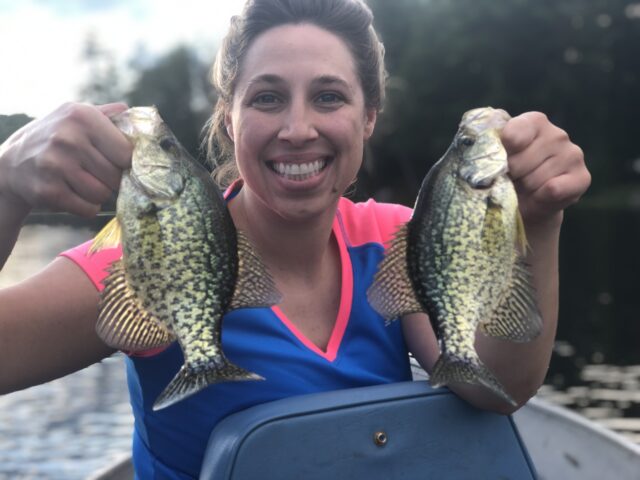
Slabs in the Open
Their summertime whereabouts and behaviors can be a mystery on larger, more daunting waters. In contrast on much smaller acreage, the fishing is substantially easier.
In summer, crappies migrate and concentrate to where food sources and comfort leads them. Water temperature, available forage (insects, minnows, invertebrates), light penetration and visibility for better feeding, and safety from predators are just some of the reasons why they relocate to the open water.
Not every lake behaves the same, and there are no one-size-fits-all location patterns. Some small lakes have great, deep weed cover offshore where crappies will revolve around summer through fall. Many others are more bowl shaped and featureless, so crappies tend to roam the open waters more and feed sub-surface. Crappies locate and adapt to whatever comfortable homing is available in the lake.
Depth doesn’t matter. Most crappie feeding in summer takes place in the upper water column, from surface to 10 feet down. In fall, these same fish are in the same areas, but slide down slightly deeper towards the basin. My offshore pattern happens on lakes of all depths, waters with maximums of only 12 feet to others as deep as 40.
It’s really easy locating and patterning these fish on small waters.
Upward and High
Crappies look upward and feed high, capitalizing on feeding opportunities that develop at different depths. In the summer months, they feed heavily on a variety of insects, invertebrates, and minnows. They are not picky eaters.
On small lakes, it doesn’t take much habitat to attract crappies. Some schools will concentrate near any available grass and plant life. Chara and pondweed are the most common vegetation types to these waters. Even though it’s considered invasive, crappies absolutely love meandering through the thin vertical stalks of curly-leaf pondweed found in my lake. On more featureless waters, others might simply roam the basins and suspend for the majority of their lives.
Crappies will roam far from structure and cover. Fish will school together according to their sizes. They move around a lot. Very rarely will a school of fish remain in exactly the same area for 5 minutes. Crappies don’t take a liking to interference from other predators or pest panfish. Once bites subside, or small bluegills and perch begin outnumbering crappies, you’ll have to relocate to elsewhere over the basin as well.
The daily movements typically consist of crappies suspending during the daytime, then gravitating towards vegetation and the surface in evenings and under calm conditions.
Within 2 hours of sunset is when to be on the water. I absolutely love targeting these schools in the evenings under low-light and windless scenarios. Surface activity will be your indicator. Go to where you see the splashing and feeding, and dorsal fins clipping the surface. The sizes of schools are on full display, with hundreds of fish now vulnerable.
Crappies are the aggressors, and I’m just trying to keep up with them on every cast.
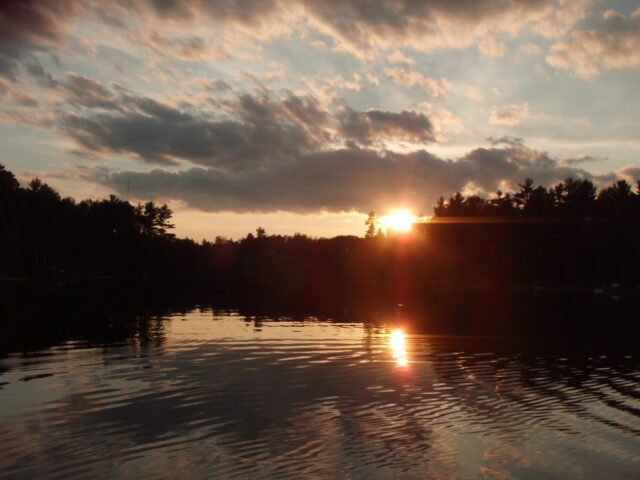
Really Easy Fishing
Small waters are for small boats only. If you favor frugal and bare bones fishing, this is a game for you.
I operate out of a 12 foot rowboat equipped with a set of oars and electric trolling motor. This type of craft is all you will ever need, since the best fishing occurs under calmer conditions. Anchoring will never be necessary.
Since all fish finding will be visual atop the surface, expensive fish locators are not ever needed. Though a portable Lowrance unit with down-imaging is useful to carry for the colder fall months when crappies school more vertically and slide deeper.
See surface activity? Proceed to there. The fishing is that simple.
Casting search plastics towards these target areas is my primary method of choice. Small 1 to 2-inch paddletails and twister tails get tried first. My lure selection consists of Charlie Brewer Sliders, Berkley Power Bait crappie grubs, and Kalin’s Crappie Scrubs rigged on a 1/32 ounce and 1/16 ounce Arkie ball heads in an assortment of colors. June through August is when crappies are caught with these aggressive plastics. Retrieve speeds should vary. Begin inches below the surface with a faster retrieve, and proceed deeper with a slower retrieve. A majority of these hungry crappies will be caught within a few feet below surface.
As an alternative to search bait plastics, very aggressive fish can be caught with small suspending jerkbaits such as the size 04 and 06 X-Rap.
When crappies are present all around, but below the boat and not surfacing, casting and vertically dropping jig and plastics such as tubes and minnow tails fares better. Proceed the countdown and slow roll them into the depths fish are holding in. Straight-retrieve or pop them back to the boat to trigger strikes. Several plastics and rigging methods are available. My favorites are Southern Pro Tackle’s Lit’l Hustler tubes and 2” Bobby Garland Baby Shads. Again, I rig all with my variety of Arkie ball heads, but will instead use a head with sickle hook. Deeper-holding crappies are subtler biters, requiring lighter hook sets. If the plastics require more weight to drop deeper and quicker, affix a lightweight 1/32 ounce split shot 8 to 12 inches above the jig. The largest crappies of the school often position deeper than the other members, so the extra weight can make a difference. Experiment with colors until the winning combo is discovered.
If a simple jig and plastic requires better hang-time and a precise depth within a few feet below surface, affix a small pencil float to the rig. I like casting a 4-inch Rocket Bobber, Thill Crappie Cork, and Thill Premium Weighted Floats (panfish size) with spring. Meanwhile, slip bobber rigs can work well in these situations too, if deeper, and later in the fall months but handle best with a dead stick approach. Kalin’s Crappie Scrubs are my favorites with any float setup.
Later in the season, crappies slide deeper. The colder the water, the deeper and more vertically stacked these crappies will be. Dropping these same plastics vertically, and below slip bobbers gets to them. I’ve also done very well experimenting with jigging spoons and blade baits as well, but these will necessitate usage of electronics.
More crappies will get caught with plastics. They are cheaper, more durable and efficient than live baits. Plastics do a great job selecting for specimens as well as weeding out the nuisance bluegills and yellow perch also inhabiting these waters.
Keeping a tight line is key to strike detection. Most of this crappie catching happens when feeling the fish take the bait.
I spool all of my size-10 and size-20 panfish reels with 5 lb. Cortland Masterbraid. High-vis yellow serves as another great strike indicator.
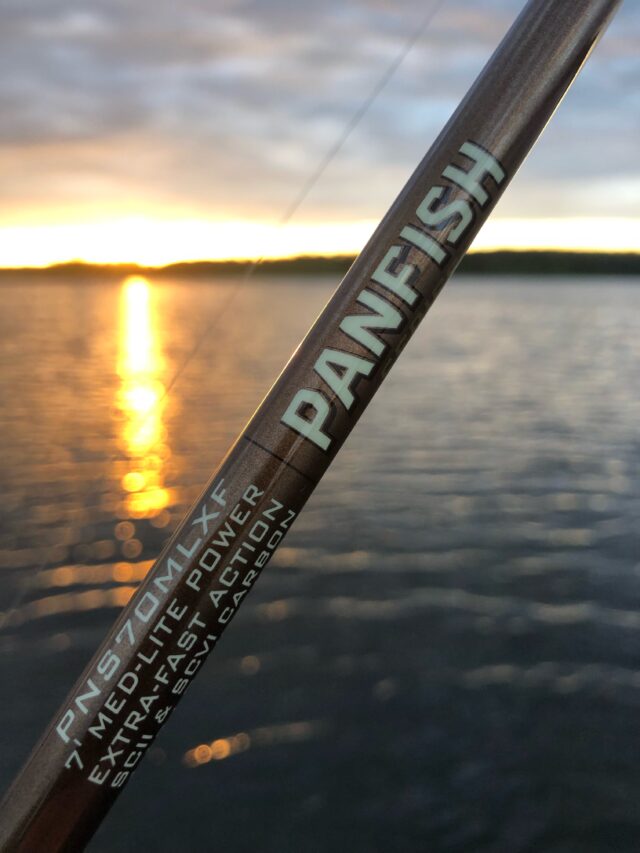 Using a thin fluorocarbon leader promotes even more bites. Attach a 2-foot section of 6 lb. Cortland Fluorocarbon to the main line.
Using a thin fluorocarbon leader promotes even more bites. Attach a 2-foot section of 6 lb. Cortland Fluorocarbon to the main line.
Rod length and sensitivity is an asset to this fishing. You can get by with your favorite ultra-lite and light action rods, but will eventually wonder what you did wrong when so many fish drop baits or get missed.
All last season, I worked the new re-designed St. Croix Panfish Series. My 7-foot medium-light (PNS70MLXF) was a great multi-application rod, exceeding the expectations in durability, tip action, and sensitivity. Prior to this, I had been exclusively using my ML Premiers and light action Eyecon. The perfectly balanced MLXF Panfish caught more fish and did a phenomenal job helping to detect light biters before they had any chance of dropping baits.
For a slight upgrade and even better performance, consider the like-minded NEW Avid Panfish series.
If crappies are moving around more than you can cast to keep up with them, single-line trolling at low speed with the Minn Kota becomes a viable option. All of the same mentioned baits work. At this point, small crankbaits and safety-pin spinner rigs can eventually come into play.
My entire arsenal
Simply Crappies
Small lakes can be either low-density with slabs only, moderately populated with fishes of all sizes, or mostly high in abundance with smaller fish.
Some harvesting is actually good for these fisheries, as populations can skyrocket creating stunting and slower growing. First see what size and year-classes of crappies are the most abundant. You will want to thin the herd on them each season in low moderation. Across many of my small northern lakes, slow-growing 9-to-11-inch fish are the most plentiful. Don’t feel bad by taking a few of these throughout the year. A total of 6 fish can feed my wife and I a full meal. They are mean, fresh and clean. A 15-inch crappie in my region is 10-year-old flesh anyways. They are most valuable to the fishery alive rather than in the freezer.
Keep expectations realistic, and understand that not every small lake is home to abundant crappies. Several factors can limit the potential of a fishery. These negative characteristics can include poor spawning years, competition with other panfish species, difficulty of management, lake infertility, stunting, and over-harvest. High water years and good spawning classes really drive the productivity of these fisheries.
Small waters crappies are mobile and simple to catch. We’ve caught these same fish in early mornings, midday at high noon, and after dark too. This is a fun and entertaining bite most anglers ignore.
Simply Crappies
Andrew Ragas splits time between the Chicago area and Wisconsin’s Northwoods. Based in Minocqua, WI, he specializes in trophy bass fishing and offers guided trips from May thru October. While big bass is the passion, he dabbles in multi-species as well. He may be visited online at www.northwoodsbass.com


